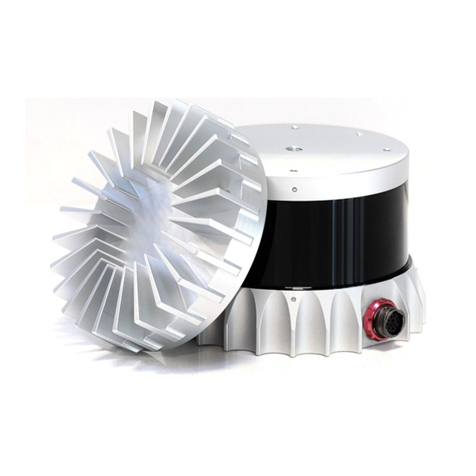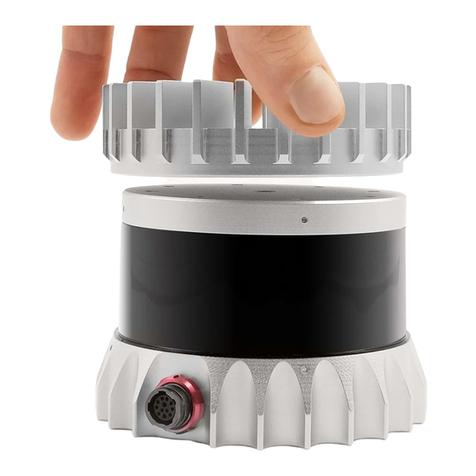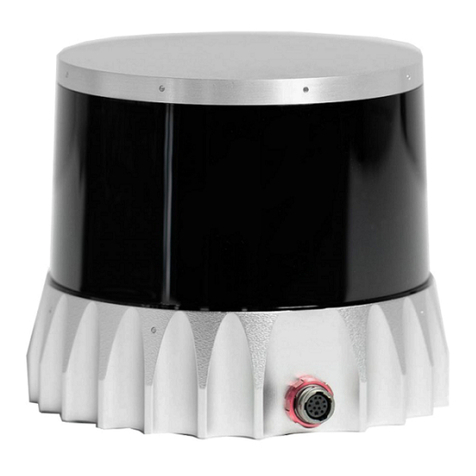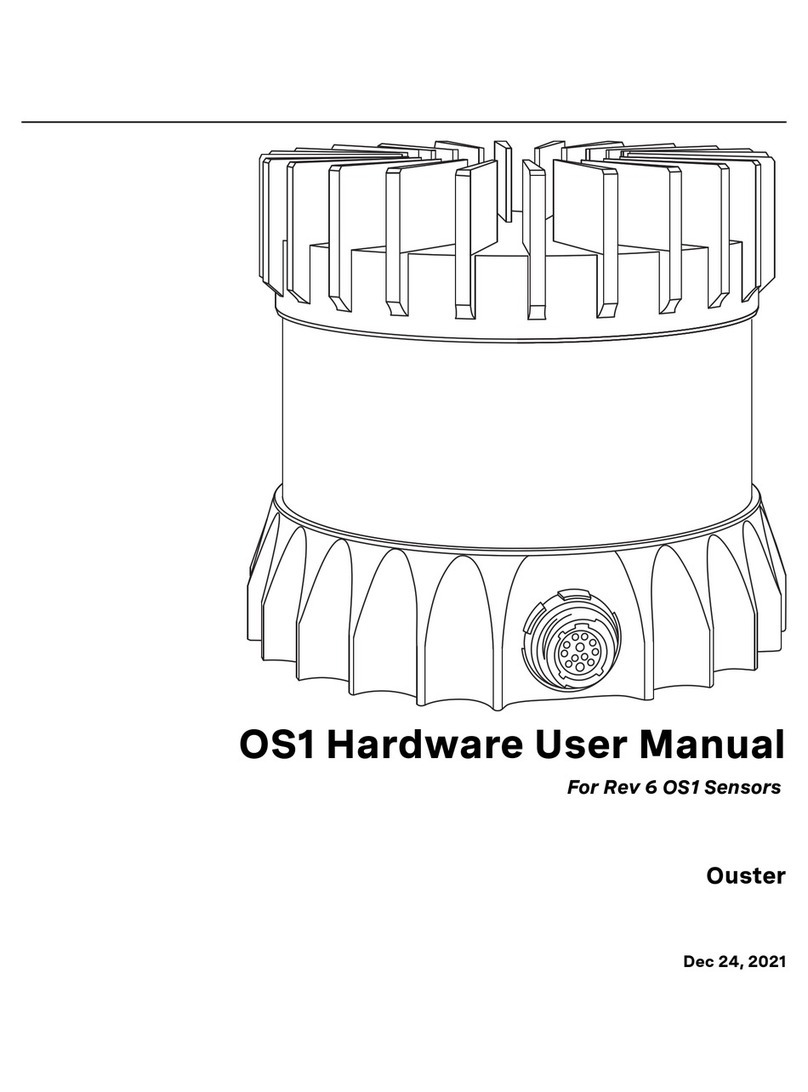
1.2 ProperAssembly,MaintenanceandSafeUse
TheOS2canbeeasilysetupbyfollowingtheinstructionsoutlinedinMountingGuidelines. Anymount-
ingorientationisacceptable. Eachsensorisshippedwithanattachedmountthatcanbeusedfortest
ornormaluse within thespecifiedoperating conditions. Thesensormay alsobeaffixedto anyother
user specific mount of appropriate thermal capacity. Please contact Ouster for assistance with ap-
provingtheuseofuserspecificmountingarrangements.
Any attempt to utilize the sensor outside the environmental parameters delineated in the OS2
datasheetmayresultinvoidingofthe warranty.
When power is applied, the sensor powers up and commences boot-up with the laser disabled. The
boot-upsequenceisapproximately60sinduration,afterwhichtheinternalsensoropticssubassem-
blycommencesspinning,thelaserisactivated,andtheunitoperatesinthedefault1024x10Hzmode.
Whenthe sensoris running,and thelaser isoperating,afaintredflickeringlight maybeseenbehind
theopticalwindow.
NotethattheOS2utilizesan865nminfraredlaserthatisonlydimlydiscernibletothenakedeye. The
sensor is fully Class 1 eye safe, though Ouster strongly recommends against peering into the optical
window at close range while the sensor is operating. Ouster sensors are equipped with a multi-layer
seriesofinternalsafetyinterlocks toensurecompliancetoClass1Laser EyeSafelimits.
TheOS2isahermeticallysealedunit,andisnotuser-serviceable. Anyattempttounsealtheenclosure
hasthepotentialtoexposetheoperatortohazardouslaserradiation.
The sensor user interface may be used to configure the sensor to a number of combinations of scan
rates and resolutions other than the default values of 1024 x 10 Hz resolution. In all available combi-
nations,the unithas beenevaluated byanNRTLtoremainwithintheclassificationof aClass 1Laser
Deviceasper IEC60825-1:2014(Ed. 3).
Assemblagecorrectetutilisationsûre
L’OS2s’installefacilementen fixantla basesur unsupportpercédetrousconcordants,et ensuivant
les instructions d’interconnexion décrites dans la section Mounting Guidelines. Toute orientation de
montage est acceptable. Chaque capteur est expédié équipé d’un dissipateur de chaleur, utilisable
en phase de test et en conditions normales. Néanmoins tout autre support présentant une capacité
thermiqueappropriéepourl’applicationdel’utilisateurpeutêtreutilisé. VeuillezcontacterOusterdans
lecasoùunmontage spécifiqueàvotre applicationseraitnécessaire.
Toute tentative d’utilisation du capteur en dehors des paramètres environnementaux définis dans la
fichetechniquede l’OS2 peutentraînerl’annulationdelagarantie.
Lorsquelecapteurestsoustension,celui-cidémarreetcommencesoninitialisationaveclelaserdés-
activé. Letempsdedémarrageestd’environ60s,aprèsquoilesous-systèmeoptiqueentreenrotation
etlelaserestactivé,lecapteuropèrealorsdanssonmodepardéfautde1024x10Hz. Lorsquelecap-
teur est en marche et que le laser est activé, on peut apercevoir une faible lumière rouge vacillante
derrièrelavitreteintée. L’OS2utiliseunelongueurd’ondesinfra-rougede865nmnmàpeinepercep-
tible pour l’œil humain, et le rayonnement laser IR émis est sans danger pour les yeux. Cependant,
bienquelesrayonnementslaserdeclasse1soientsansdangerdansdesconditionsraisonnablement
prévisibles,Ousterrecommandefortementdenepasregarderfixementlavitreteintéependantquele
6



































